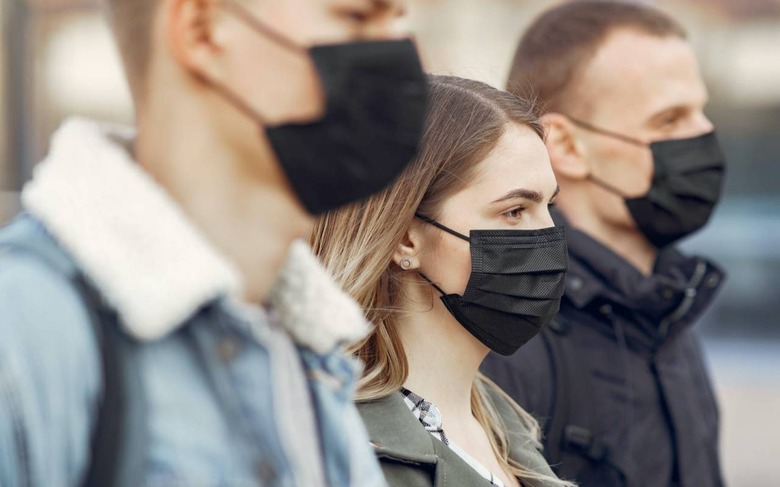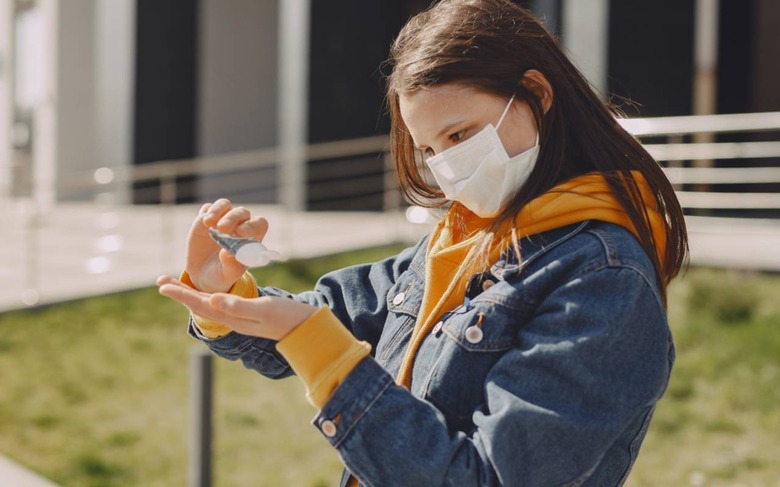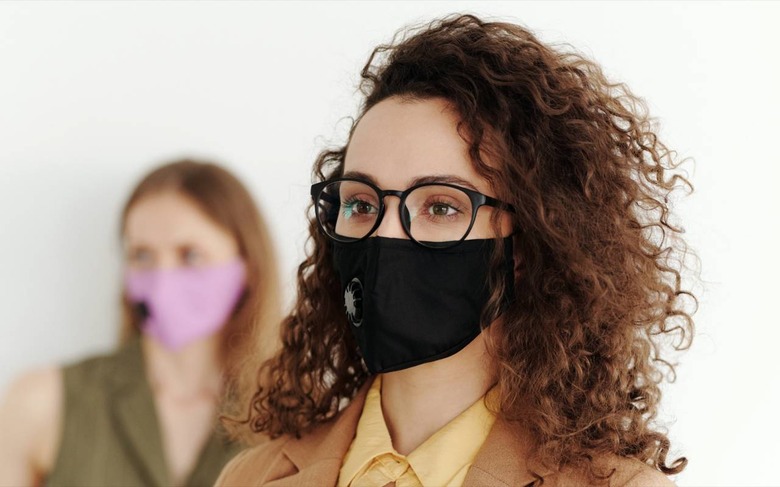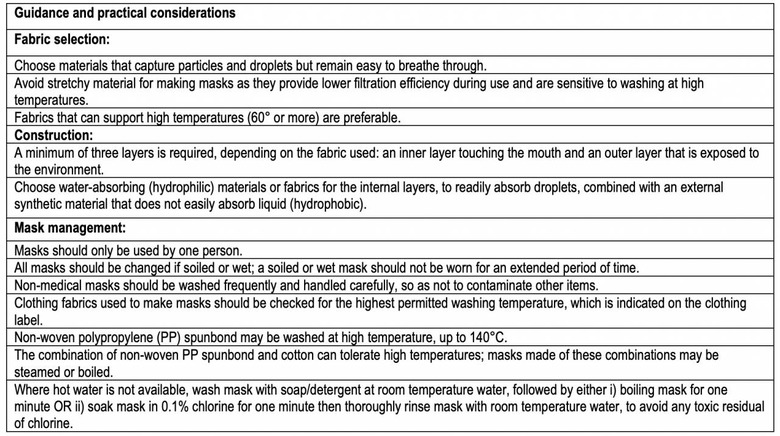WHO Describes "Ideal" Face Mask With COVID-19 "Far From Over"
The COVID-19 pandemic is "far from over," experts at the World Health Organization have warned, cautioning against complacency as global cases are still rising and a second wave entirely possible. The ominous announcement comes as the WHO amends its guidance on masks, setting out several important factors wearers should bear in mind as they protect themselves and others in daily life.
"More than six months into the pandemic," Tedros Adhanom Ghebreyesus, Director General of the WHO, observed in a media briefing today, "this is not the time for any country to take its foot off the pedal." The organization chief was backed up by a number of experts.

"This is far from over," epidemiologist Maria van Kerkhove added, pointing out that if countries didn't maintain focus they were likely to see a second wave of COVID-19 infections. In the US, for example, where there have been almost 2 million total cases of coronavirus infection and more than 109,000 deaths in total, according to the CDC, there's concern that reopening efforts across states has undone some of the work social-isolation achieved earlier in the year.
The WHO has new mask guidelines
Early on in the pandemic, the WHO did not join widespread calls in some countries to make mask-wearing mandatory. That changed in recent days, with new evidence and research encouraging the World Health Organization to change its recommendations on masks. In fact, it now suggests that the general public wear them in a number of conditions.
That's not to say that every face mask is created equal. While the WHO is talking about non-medical masks – e.g. fabric masks that are more widely available, but not rated for healthcare professionals to use in hospitals and other such environments – there's significant variation there, too. Companies large and small, as well as individual vendors, have stepped up to supply the market with fabric mask options, but the WHO suggests using caution to make sure the one you're wearing actually does the most benefit.
The best COVID-19 mask has the right mix of fabrics and layers
Deciding on fabric type is the first challenge. Right now, the WHO concedes, there's little in the way of systematic evaluation of the different types of fabric for mask wearing in COVID-19 conditions, much less combinations of fabrics in different shapes and sizes. However it's using a French standard to make its recommendations, based on a minimum 70-percent solid particle or droplet filtration, along with factors around breathability.
Then there's the number of layers. There, the WHO recommends three as a minimum, each serving a different and specific purpose. Those layers should therefore be of different fabric, ideally.
According to the World Health Organization, "the ideal combination" would have an innermost layer made of a hydrophilic material – i.e. one which absorbs liquids – such as cotton or a cotton blend. The outermost layer would be hydrophobic – i.e. it repels liquids – such as polyester, polypropylene, or blends of those. Avoid coatings to that outer layer, however, as while a wax layer might increase its resistance to water, it could also make it harder to breathe through.

In the middle should be a further hydrophobic layer, the WHO advises, made up of a synthetic non-woven material such as polypropylene, or alternatively a cotton layer which could enhance filtration or retain droplets.
Taking care of coronavirus masks
Whatever the layers are made of, and how numerous they might be, there are a few key rules. For a start, they should only be worn by one person. Nobody should be sharing face masks.
If they're wet, or visibly soiled, they should be changed. "A wet mask should not be worn for an extended period of time," the WHO advises. In taking them off, you should only touch the sides of the mask – i.e. the elastic straps or ties – and not the front. If you can't wash it straight away, sealing it in a plastic bag is the next best thing.
As for washing, the WHO has advice there, too. The general guidance is to opt for the hottest temperature that the fabric will handle: at least 60 degrees Celsius (140 degrees Fahrenheit), which roughly equates to a hot cycle on the typical US washing machine. You should use soap or laundry detergent, and be careful with high-agitation wash cycles since they could damage fabrics or stretch out stretchier ones.

If you don't have hot water available, the WHO has a two-step process it recommends. First, wash the fabric mask with soap or detergent and with room temperature water. Then, either boil the mask for one minute, or soak it in 0.1-percent chlorine for one minute. If you use the chlorine method, you should then thoroughly rinse the mask with room temperature water.
The WHO still has problems with face masks
While its guidance may have evolved, the World Health Organization still has concerns about fabric masks for the general public. The most significant is the possibility of a false sense of security. After all, the WHO highlights, non-medical fabric masks aren't impermeable to the COVID-19 virus.
That could end up giving wearers the perception that they can soften their other healthcare precautions, simply because they're wearing a mask. The reality is that you still need to be regularly washing your hands – especially after touching or removing a mask – and practicing social distancing.

It's best, then, to see face masks as a component of COVID-19 pandemic management, not a solution. If you're in a public setting such as a grocery store, social gathering, church or other similar location, or on public transportation or in a work environment where you regularly come into close contact with others, you should be wearing a fabric mask. Just make sure the mask you choose is actually fit for purpose.
